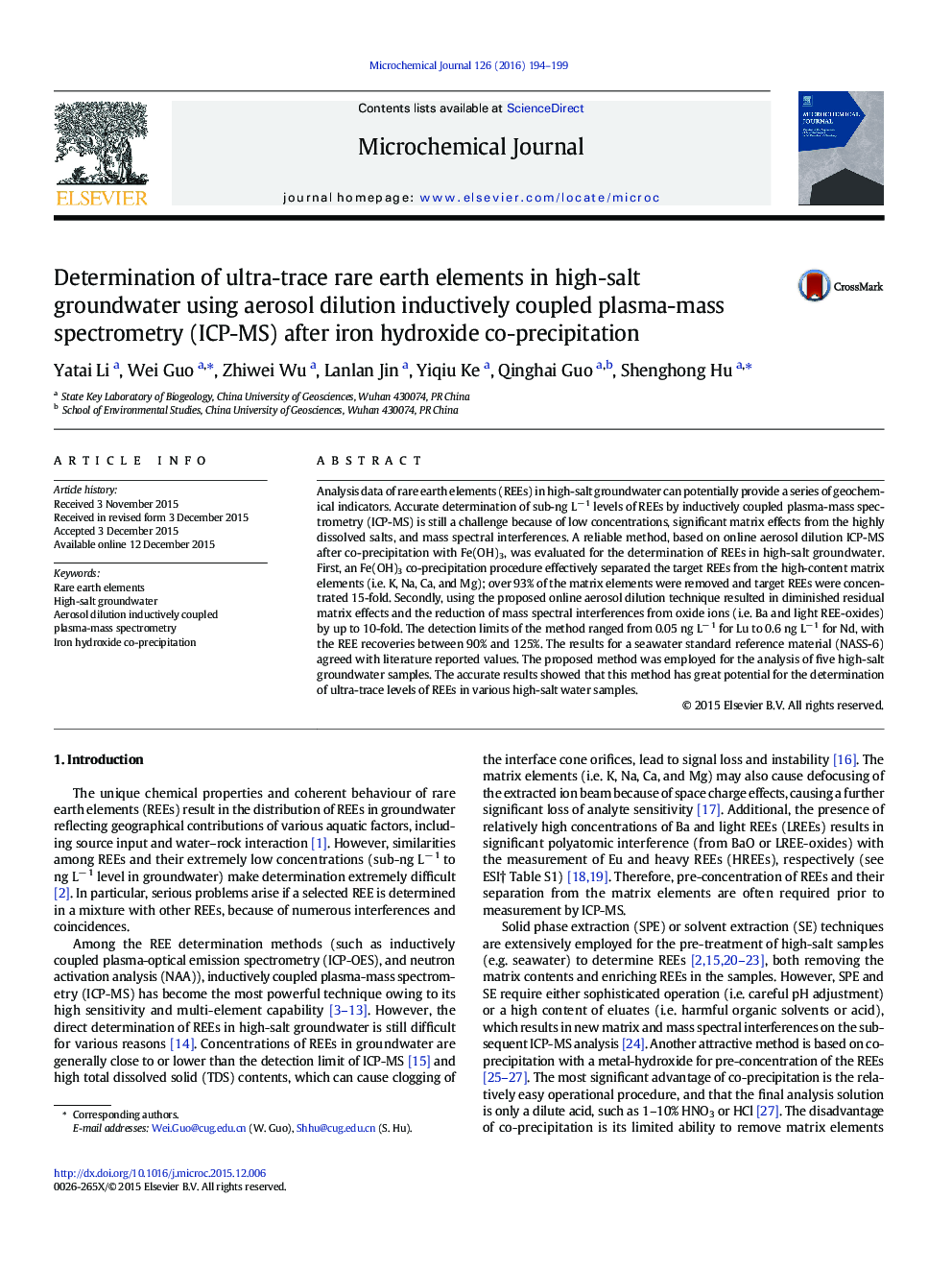| Article ID | Journal | Published Year | Pages | File Type |
|---|---|---|---|---|
| 7641468 | Microchemical Journal | 2016 | 6 Pages |
Abstract
Analysis data of rare earth elements (REEs) in high-salt groundwater can potentially provide a series of geochemical indicators. Accurate determination of sub-ng Lâ 1 levels of REEs by inductively coupled plasma-mass spectrometry (ICP-MS) is still a challenge because of low concentrations, significant matrix effects from the highly dissolved salts, and mass spectral interferences. A reliable method, based on online aerosol dilution ICP-MS after co-precipitation with Fe(OH)3, was evaluated for the determination of REEs in high-salt groundwater. First, an Fe(OH)3 co-precipitation procedure effectively separated the target REEs from the high-content matrix elements (i.e. K, Na, Ca, and Mg); over 93% of the matrix elements were removed and target REEs were concentrated 15-fold. Secondly, using the proposed online aerosol dilution technique resulted in diminished residual matrix effects and the reduction of mass spectral interferences from oxide ions (i.e. Ba and light REE-oxides) by up to 10-fold. The detection limits of the method ranged from 0.05 ng Lâ 1 for Lu to 0.6 ng Lâ 1 for Nd, with the REE recoveries between 90% and 125%. The results for a seawater standard reference material (NASS-6) agreed with literature reported values. The proposed method was employed for the analysis of five high-salt groundwater samples. The accurate results showed that this method has great potential for the determination of ultra-trace levels of REEs in various high-salt water samples.
Keywords
Related Topics
Physical Sciences and Engineering
Chemistry
Analytical Chemistry
Authors
Yatai Li, Wei Guo, Zhiwei Wu, Lanlan Jin, Yiqiu Ke, Qinghai Guo, Shenghong Hu,
